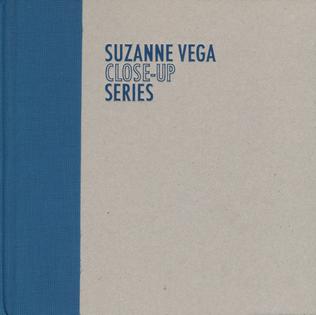 The first thing one notices about Suzanne Vega’s ninth studio album is that it rocks. Moreso than any of her albums, the drums and guitars have an edge that others didn’t, even with players that usually deliver in other contexts. But she’s always done what she’s wanted, and with the assistance of longtime collaborator Gerry Leonard, Flying With Angels is where she is now.
The first thing one notices about Suzanne Vega’s ninth studio album is that it rocks. Moreso than any of her albums, the drums and guitars have an edge that others didn’t, even with players that usually deliver in other contexts. But she’s always done what she’s wanted, and with the assistance of longtime collaborator Gerry Leonard, Flying With Angels is where she is now. “Speakers’ Corner” crashes out of the speakers from the first beat, with riffs and “oo” harmonies making it more what we used to call radio-friendly than most of her album openers. The lyrics, while subtle, are timely. The title track has more familiar ambient elements; in fact it sounds like a cousin of “Small Blue Thing” without being a retread in the slightest. “Witch” begins in a similarly ethereal space, but as soon as the main character appears, it spirals into a groove packed with tension and uncertainty; we’re not sure if the attacker is literal or metaphorical, but the damage inflicted is real. So “Chambermaid” is very much a welcome shift, a simultaneous homage and answer to Dylan’s “I Want You”, so much so that he gets justifiable writing credit. But “Love Thief” is completely unexpected, a sexy soul steamer with prominent vocals by Catherine Russell. With the possible exception of the “Tom’s Diner” remix, it’s unlike anything else in her catalog.
Her Sprechstimme approach hasn’t always impressed us, and using that in her tribute to “Lucinda” (as in Williams) might have been specifically to avoid singing like the woman, even when the musical backing could pass for the real thing. “Last Train From Mariupol” is mournful on its own, and moreso when you realize she’s singing about the city in Ukraine that was decimated by the Russians. The instruments used are very effective. “Alley” returns sonically and thematically to the title track, and evocative in its reference to a certain Marc Chagall painting. There’s another sharp turn with “Rats”, but her mostly spoken, breathless delivery of the lyrics let down any promise in the melody of the chorus. It’s an ugly song, which was probably the point, but that even makes the reverie of thwarted courtship at the heart of “Galway” a welcome escape.
Even with all the diversions, Flying With Angels still sounds like a Suzanne Vega album. It certainly doesn’t suffer from sameness, and hopefully her next one won’t take as long to emerge.
Suzanne Vega Flying With Angels (2025)—3½



